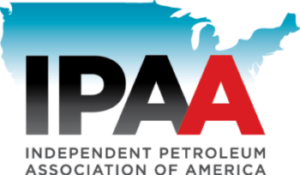Aug 2, 2016 Energy Trade Associations to EPA: This is An Opportunity to Better Understand Our Industry
WASHINGTON, D.C. – The Independent Petroleum Association of America (IPAA), the American Exploration & Production Council (AXPC), and 47 additional U.S. oil and natural gas industry trade associations today urged the U.S. Environmental Protection Agency (EPA) to work with the industry on its recent information-gathering request, allowing for a better and more thorough understanding of oil and natural gas operations. The energy trade associations submitted comments to the EPA on its proposed Information Collection Request (ICR) for oil and gas facilities. The energy trade associations outlined their concerns with the agency’s proposed ICR and stressed the need for EPA to get a better understanding of the industry, including the declining nature of oil and natural gas wells, and learn from existing agency resources and resources that are publicly available from state agencies.
“It’s been widely reported that the U.S. oil and natural gas industry is hard at work reducing its air emissions,” said Lee Fuller, IPAA Executive Vice President. “The industry has successfully cut its greenhouse gas emissions levels, allowing the United States to become the world’s leader in cutting carbon. However, this proposed ICR has all the signs of a rushed job, not a thorough process to gather the facts and hear meaningful public comment from the people closest to the U.S. oil and natural gas industry. This rushed information-gathering effort is a misguided approach and we strongly encourage EPA to work with the industry and state agencies to thoroughly and accurately collect data – much of which is already publicly available – on oil and natural gas operations.
“This is a real opportunity for the decision-makers at EPA to better understand the complexities of the U.S. oil and natural gas industry. However, this information-gathering effort creates additional paperwork for companies to produce to EPA and adds unnecessary burdens on companies’ technical teams to prepare and submit rushed comments under enormous time constraints. Meanwhile, many of these same technical teams are currently developing their companies’ compliance programs for EPA’s June regulations and will then turn to their companies’ greenhouse gas inventory reports, which are due in the first quarter of 2017. Instead of creating duplicative work and information, which goes against the intent of the Paperwork Reduction Act, EPA should first, collect all of the publicly available data from industry databases – or acquire it free from state agencies – then, EPA can refine its search and request more targeted, specific information from the industry. As it stands now, EPA’s proposed ICR is clearly being driven by a tight political timeline to initiate and largely complete the information-gathering process before the end of this administration’s term,” concluded Fuller.
EPA Administrator Gina McCarthy previously indicated that the agency is unfamiliar with the complexities of the U.S. oil and natural gas industry. “EPA’s learning this industry right now because it is not an industry we regulate,” McCarthy said. “We’ve just gotten into regulation of this so there’s a lot of hundreds of thousands of small sources and EPA does not generally have a relationship with this industry as we do other sectors that we’ve regulated for frankly decades. But we are learning.”
In June, IPAA sent a letter to EPA Acting Assistant Administrator Janet McCabe requesting an extension to the initial comment period for its ICR to accommodate for the additional time required of the industry to appropriately respond. EPA denied IPAA’s request. Instead, EPA has announced its intent to distribute the ICR questionnaires by October 30, 2016. The first part – sent to all American producers – requires information in 30 days; the second part – intended to be sent to about 3,000 producers and requiring far more detailed information – would be due in 120 days. Among the challenges for EPA – as Administrator McCarthy observed – is to understand the impact of regulations on the hundreds of thousands of small sources. Yet, under EPA’s planned schedule, it would be sending its detailed questionnaires to companies before it ever received the information from the first questionnaire to know how to get a full understanding of the industry.
The joint trade association comments are available on IPAA’s website.
About the Independent Petroleum Association of America
The Independent Petroleum Association of America (IPAA) is a national upstream trade association representing thousands of independent oil and natural gas producers and service companies across the United States. Independent producers develop 90 percent of the nation’s oil and natural gas wells. These companies account for 54 percent of America’s oil production, 85 percent of its natural gas production, and support over 2.1 million American jobs. Learn more about IPAA by visiting www.ipaa.org and following @IPAAaccess on Twitter.








